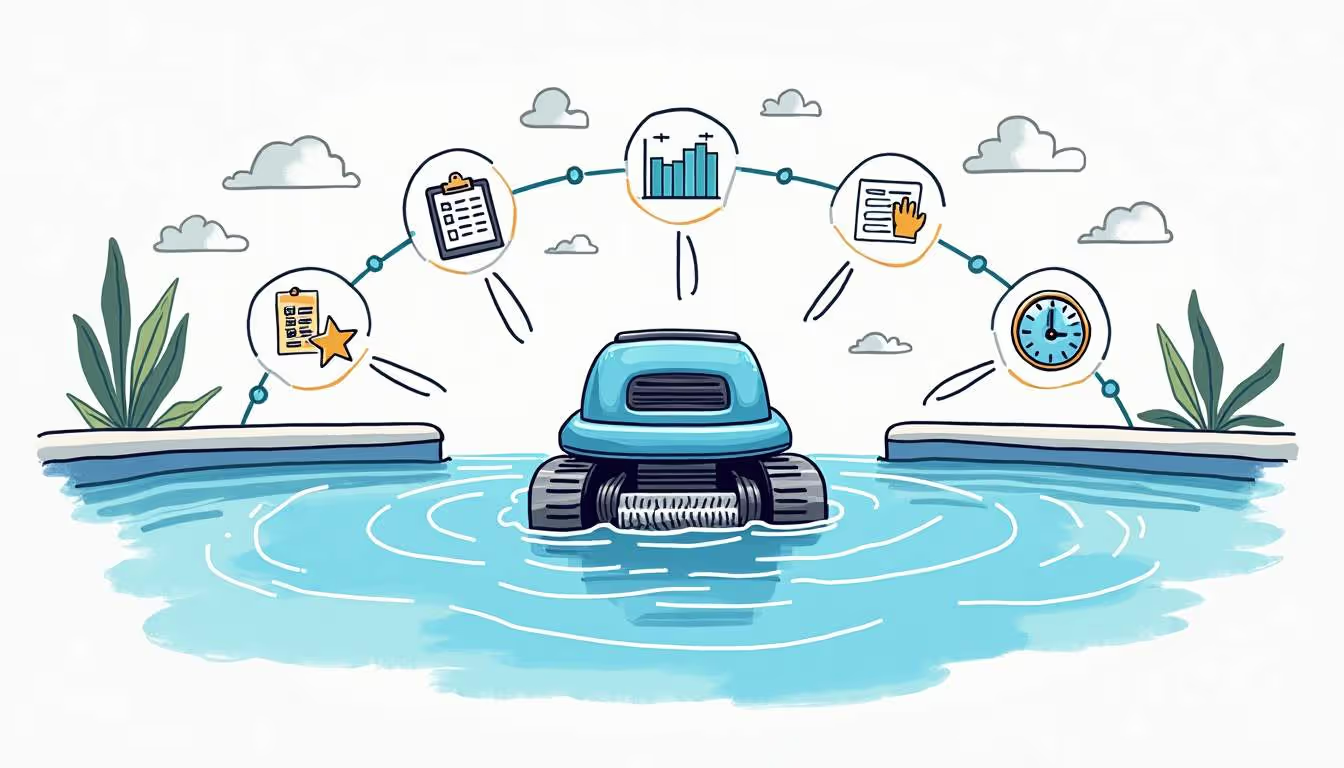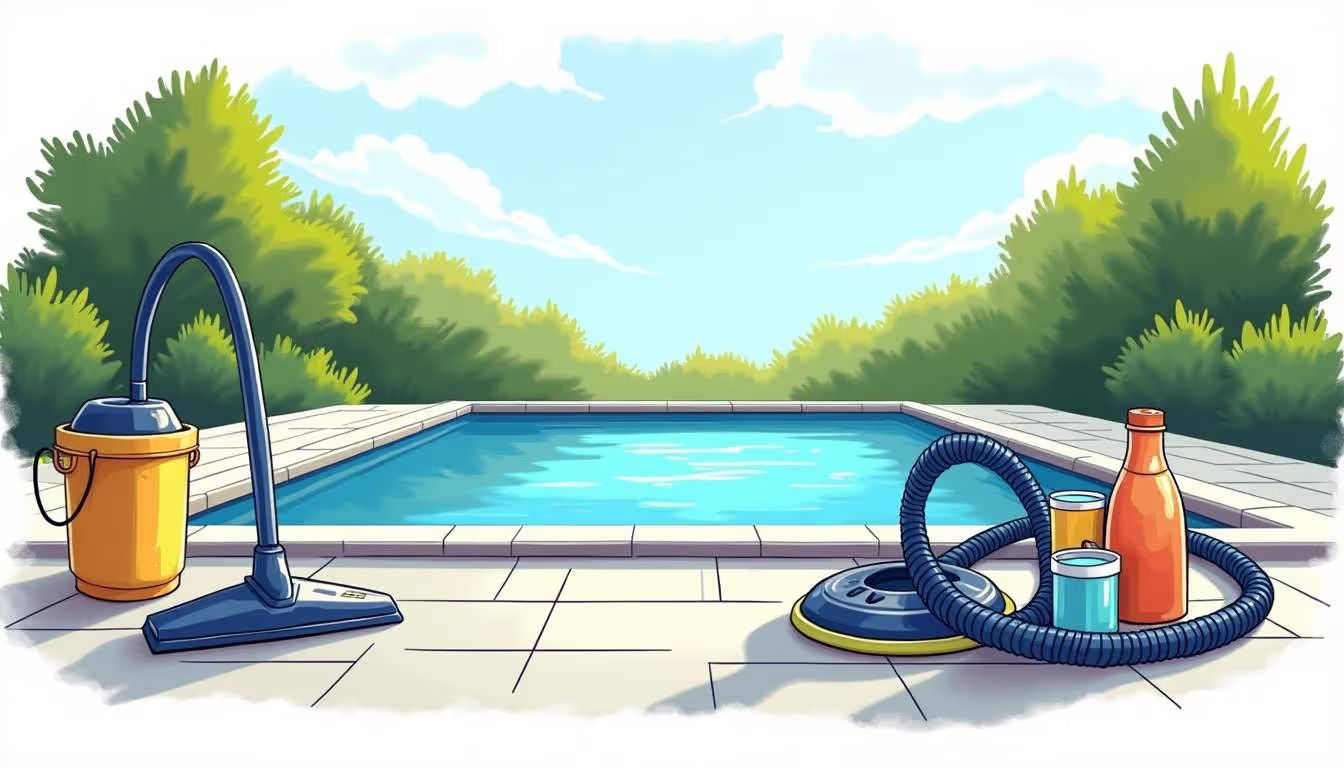Effective Strategies for Pool Service Customer Retention
Customer retention has overtaken customer acquisition as the primary driver of long-term revenue for pool service companies. Study after study confirms it is five to seven times more expensive to win a new account than to keep an existing one, and recurring monthly revenue from loyal clients can raise profit margins by as much as 25 percent. In an environment where material costs, labor shortages, and seasonality are constant challenges, disciplined retention strategy becomes the surest way to stabilize cash flow and grow sustainably. The following playbook distills proven, data-backed practices used by high-performing pool service providers across North America. Every tactic can be implemented with today’s leading field-service software platforms and adjusted to suit the size, niche, and geographic realities of any pool maintenance business.
The Revenue Impact of Retention
According to the latest Pool & Hot Tub Alliance benchmarking report, a single residential service account has an average lifetime value of just over $7,500 when retained for five seasons. Increasing retention by a modest 5 percent therefore translates into tens of thousands of dollars in incremental gross margin for even a small, two-truck operation. In addition, retention smooths the peaks and troughs of seasonal demand, which helps firms forecast inventory needs, schedule technicians more efficiently, and negotiate better rates with chemical suppliers.
Those benefits compound at scale. A regional service chain that operates on a 20 percent attrition rate must replace one in five clients every year simply to stand still. Cutting attrition to 10 percent frees up marketing budget, reduces truck rolls devoted to “rescue” cleans, and unlocks capacity to upsell profitable add-ons such as automation, lighting, and energy-efficient pump installs. In short, retention is not just a customer-service metric; it is a strategic lever capable of reshaping the entire profit and loss statement.
Understanding the Modern Pool Owner
Today’s pool owners are connected, time-poor, and sharply focused on health, safety, and sustainability. Seventy-four percent research service providers online before making first contact, and 56 percent expect real-time updates about technician arrival, water chemistry reports, and billing. Expectations are set not by competing pool companies but by Amazon, Uber, and other consumer apps that deliver transparency on demand. Failing to mirror that experience can make even competent service feel outdated, eroding perceived value and encouraging churn.
The modern pool owner also views the backyard as an extension of indoor living space. Clean water is table stakes; they want proactive advice on everything from eco-friendly sanitizers to connected leak detectors that integrate with smart-home systems. Firms that anticipate these needs position themselves as trusted advisors rather than interchangeable maintenance vendors. This emotional loyalty becomes a powerful insulation against price-based poaching.
Building a Proactive Service Calendar
Preventive maintenance has a direct correlation with retention. A structured, data-driven service calendar reduces surprise breakdowns, eliminates green-pool emergencies, and demonstrates a commitment to safeguarding the client’s investment. Leading businesses build their calendars around regional climate data, manufacturer recommendations, and historical readings captured by digital water-testing tools. Technicians are guided by checklists inside the mobile app, ensuring that critical tasks—o-ring inspection, calcium hardness balancing, salt-cell cleaning—are never skipped, even on hectic summer routes.

Not all pools require identical frequencies. Variable scheduling, powered by historical service records and sensor telemetry, allows the company to visit heavy-use vacation rentals more often while moving lightly used homeowner pools to a slightly longer cadence. Customers appreciate the customized approach and see it as evidence of a company that treats their pool, and their budget, with respect. Proactive scheduling also provides natural touchpoints for friendly reminders, such as a mid-spring email that previews the upcoming start-up visit and invites questions.
When efficiently executed, a proactive calendar becomes a silent salesman. The absence of algae blooms, cloudy water, or broken equipment is a daily reminder of the service provider’s expertise. In many cases, neighbors notice and ask for a referral, creating a virtuous loop in which retention and acquisition reinforce each other.
Communication That Builds Trust
Clear, timely communication is consistently ranked as the number-one reason pool owners stay with or leave a service provider. Automated appointment reminders, GPS-based “on my way” texts, and photo-rich service reports satisfy the basic need for transparency. Yet the most successful companies go further, sending personalized water-health summaries that interpret numbers in plain language and flag emerging issues before they escalate. By coupling factual data with actionable recommendations, the company shifts the conversation from cost to value.

Another trust-building tactic is technician bios included in confirmation messages. When customers know the person who will enter their backyard, anxiety drops, hospitality rises, and reviews improve. Every communication touchpoint should be branded, professional, and consistent. The tone matters: confident yet conversational, informative yet concise. In a 2023 survey of 1,200 pool owners, 82 percent said they would remain with a company that “communicates like a concierge,” even if the monthly rate increased by up to 12 percent.
Leveraging Technology to Create Sticky Experiences
Advanced field-service platforms now integrate customer relationship management, route optimization, chemical logging, and invoicing in one cloud-based ecosystem. For customers, that translates into a friction-free experience: a single portal to pay invoices, approve quotes, and access historical service photos. For office staff, it eliminates double entry and ensures that accurate, up-to-the-minute information flows between dispatch, technicians, and finance. The result is fewer billing disputes, faster job completion, and, most importantly, higher satisfaction.
Mobile apps with NFC or Bluetooth water-testing probes add further value. Readings captured poolside sync automatically to the customer portal, where trending graphs illustrate how technician interventions maintain water within ideal ranges. Visual proof reinforces expertise and makes it difficult for competitors to lure customers away with vague promises of “better service.” Many software suites also offer loyalty modules, allowing companies to award points or credits for on-time payments, package upgrades, or successful referrals. These gamified incentives deepen engagement and raise the psychological switching cost.
Handling Issues Before They Escalate
No service company is immune to mistakes. What differentiates retention leaders is how rapidly and transparently they resolve issues. A rule of thumb adopted by best-in-class operators is the “2-Hour / 24-Hour” framework: acknowledge any customer complaint within two hours and present a resolution (or action plan) within twenty-four. Speed signals respect, and respectful handling of problems often turns disgruntled clients into vocal brand advocates.
Field-service software can trigger automated alerts when a negative survey response or a low star rating is received. Escalation workflows route the message to a supervisor, who can review job photos, chem logs, and technician notes before calling the customer with concrete information. Offering a goodwill filter replacement or a complimentary vacuum during the next visit costs little yet reinforces the company’s commitment to getting things right. Data shows that 70 percent of customers who experience a well-handled service recovery renew their contracts for at least one additional season.
Rewarding Loyalty and Gathering Feedback
Formal loyalty programs are gaining traction in the pool industry. Points-based systems, tiered memberships, and anniversary gifts acknowledge the customer’s contribution to the company’s success and trigger powerful reciprocity. Simple gestures—such as mailing a branded microfiber towel at the two-year mark or applying a $50 credit toward an energy-efficient motor upgrade—turn routine maintenance into a relationship rooted in shared appreciation.
Feedback loops ensure the program stays relevant. Quarterly Net Promoter Score surveys, in-portal suggestion boxes, and brief post-visit rating prompts capture insights while memories are fresh. Aggregated data highlights systemic issues and reveals which value-added services resonate most. Acting visibly on that feedback closes the loop and shows customers their opinions are not only heard but drive concrete improvements. Over time, this participatory approach reduces churn and fuels innovation.
Measuring Success and Adjusting Strategy
Retention cannot improve what it does not measure. Key performance indicators should include churn rate, lifetime value, service recurrence interval, and average response time to customer inquiries. Dashboards that display these metrics in real time empower managers to spot negative trends early and intervene. For example, rising chemical usage without a corresponding spike in temperature might indicate technician training gaps, prompting a refresher course before dissatisfaction spreads.

Benchmarks matter as well. Comparing internal metrics against regional and national averages identifies competitive advantages and vulnerabilities. If the company’s average lifetime value lags peers, it may signal under-utilization of add-on sales. If churn is low but referral volume is weak, marketing may need to promote a formal referral reward. Continuous, data-driven refinement keeps the retention engine humming and protects the business from complacency.
Practical Checklist for Immediate Implementation
The principles outlined above translate into specific, actionable steps. Use the following checklist as a quick reference during strategy sessions or team meetings.
- Audit current churn: calculate the past twelve months of cancellations and identify primary reasons.
- Map every customer touchpoint, from the first call to invoice payment, and plug communication gaps.
- Deploy or optimize a field-service platform that unifies scheduling, job notes, photos, and billing.
- Standardize technician checklists, including water-chem targets, equipment inspections, and photo documentation.
- Set up automated “on my way,” “job complete,” and monthly health-summary messages.
- Launch a loyalty program with clear, attainable rewards tied to behaviors that benefit both company and customer.
- Establish the “2-Hour / 24-Hour” complaint-resolution rule and train the office team accordingly.
- Survey customers quarterly and publish a “You Spoke, We Acted” update highlighting improvements.
- Review retention KPIs in monthly leadership meetings and refine tactics based on data insights.
Conclusion: Turning Retention into a Growth Engine
Retention excellence is neither accidental nor the result of a single grand gesture. It is a composite of proactive maintenance, intelligent communication, technology-enabled transparency, swift issue resolution, and heartfelt recognition of customer loyalty. By institutionalizing these practices, pool service companies transform unstable, weather-dependent revenue streams into predictable, high-margin annuities. Just as balanced water chemistry prevents algae blooms, balanced retention strategy prevents profit leaks. Companies that embrace this mindset will not merely survive the competitive heat; they will thrive, expand, and become the service partners pool owners trust year after year.







